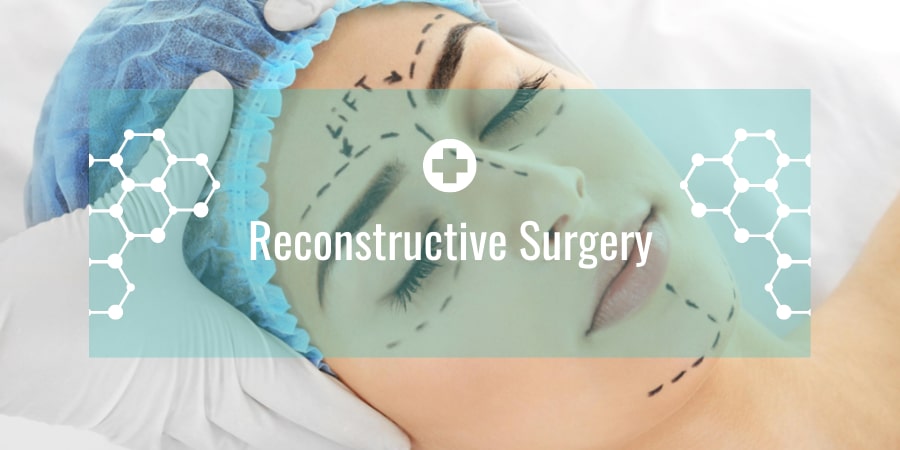In the broadest sense, reconstructive surgery implies the use of the most advanced surgical means to restore both the appearance and function of diseased or damaged parts of the body.
Reconstructive surgery is able to reform body parts which have been left affected by traumatic injuries after accidents, aging, birth defects or diseases. Thanks to advances in cosmetic surgery, besides restoring function, plastic reconstructive surgery these days can give back a close to normal look to every part of the body.
Table of Contents
The most common medical conditions treated with reconstructive surgery are:
- bone injuries in the head or face
- sports injuries in hands or feet
- burns or scars from skin lesions
- women who underwent mastectomy
- children with cleft lip or malformations in the head.
Reconstructive procedures are conducted in almost all sub-fields of surgery, most frequently in:
- General surgery – focuses on abdominal organs (esophagus, stomach, small bowel, colon, liver, pancreas, gallbladder, bile ducts and thyroid gland) and deals with diseases involving hernias, soft tissue, breast and skin.
- Gynecological surgery – refers to procedures for cancer, infertility, benign conditions, incontinence and elective cosmetic procedures
- Pediatric surgery – involves the treatment of young adults, adolescents, children, infants and fetuses.
- Cosmetic surgery – performed with the purpose of improving people’s appearance and body-image. Podiatric surgery – is focused on the surgical treatment of disorders of the lower extremities, more specifically the ankle and foot.
Plastic Reconstructive Surgery
Over the last decade, a number of events have transformed plastic reconstructive surgery and created new approaches and techniques for medical as well as for aesthetic purposes. Recent advances in technology broadened the scope of plastic surgery, and as a result, a great number of sub-specializations were fostered.
Plastic reconstructive surgery has expanded its curriculum including new skills and integrating other areas of medical specialties. For instance, laser technologies, endoscopic techniques, research on tissue engineering and molecular transplantation, the development of digital imaging, teleconferencing and virtual reality training units have brought forward a revolution in this field.
Some major areas of ongoing investigation include:
- Biology of the aging skin
- Wound healing agents
- Mammoplasty
- Cleft palate repair
Plastic Reconstructive Surgery Procedures
Among the most common reconstructive surgery procedures we find:
- Treatment of skin diseases, trauma and cancer
- Malignant and benign lesion control of the skin and other soft tissue
- Melanoma treatments
- Removal birthmarks and tattoos
- Reconstructive flaps and grafts
- Scar revisions
- Complex wound and burn treatment such as acute thermal, chemical and electrical burn management
- Reconstructive burn treatment
- Addressing infections, bites, foreign bodies, chronic open wounds
- End-stage hidradenitis suppurativa
In order to manage wounds and burns plastic reconstructive surgery makes use of techniques such as:
- Primary closure
- Dressings
- Skin grafts
- Tissue expansion
- Free flaps
Reconstructive Surgery Cost
Most cosmetic procedures are not covered by health insurers, nevertheless, when plastic surgery is required for reconstructive purposes, exceptions are considered. Depending on the type of procedure, reconstructive surgery cost can vary depending on the technique and the materials used.
Some types of reconstructive surgery are covered by insurance companies when the procedure is a medical necessity:
- Abdominal surgery
- Breast surgery
- Ear surgery
- Eyelid surgery
- Facial surgery
- Hand surgery
- Nasal surgery
